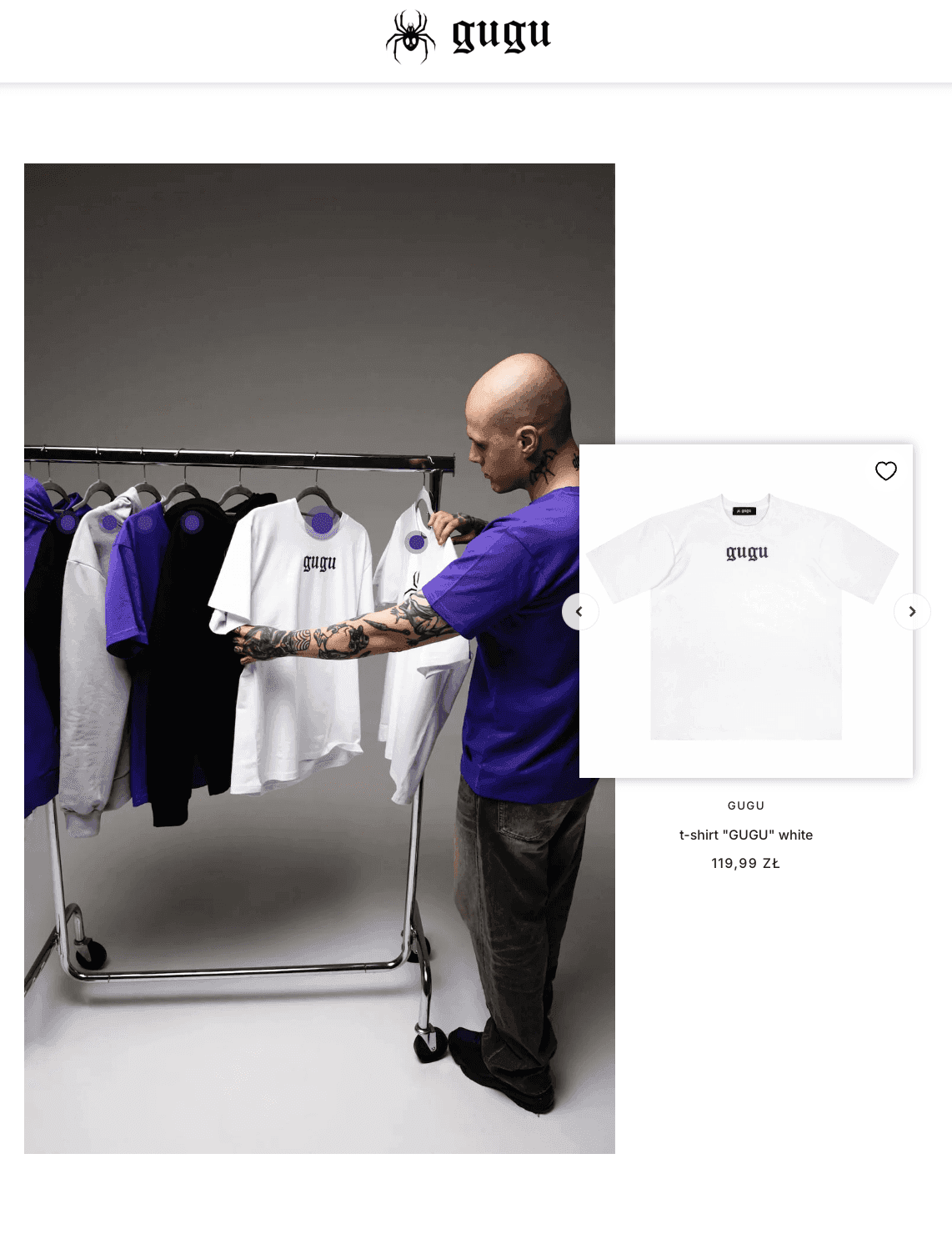
By Anna, November 11, 2025 · 6 min read
Music E-commerce Trends 2026: How Artists Sell More with Shopify
What if your fans could buy your merch the moment they’re listening to your song? That’s already happening and 2026 will take it even further.
The music industry is shifting fast. Streaming gives visibility, but not profit. Most artists depend on platforms that own the data, algorithms, and audience. Social media builds buzz, but not revenue. Many musicians are tired of chasing reach that doesn’t translate into real income.
That’s why more of them are turning to e-commerce - launching their own Shopify stores, creating merch drops and selling directly to fans.
At Hatimeria, we see this change up close. From streetwear labels born out of record labels to Shopify stores connected with Spotify, artists are building digital ecosystems that turn creativity into business.
1. Why musicians are moving to Shopify
Streaming pays visibility, not bills. The average artist earns less than $0.004 per stream, which means one hoodie sale can equal more than 100,000 plays. Selling directly gives independence - and Shopify makes it simple.
84% of fans buy merch to support their favourite creators (Spotify Fan Study, 2023). Average order value in music e-commerce grew by 37% year over year after adding mobile payments (Shopify Commerce Trends 2024).
65% of merch orders come from outside the artist’s home country - showing how global the audience has become (IFPI Global Music Report 2025).
When we helped GUGUshop, a Polish streetwear and music brand, migrate from Shoper to Shopify, we didn’t just redesign the store but we also rebuilt the fan experience. After the migration, conversion rates increased 7× and revenue grew by 140% year over year. The site became faster, mobile-first, and easier to use - everything that matters for impulsive music-merch buyers.


2. Turn Merch Drops into Real Marketing Campaigns
Fans don’t just want to buy, they want to join the story. Artists now plan merch drops like album releases - teasing, announcing, and creating hype.
The global music-merch market is set to hit $16.3 billion by 2030, growing steadily as artists move to digital-first sales (MIDiA Research, 2025). Smart creators use Shopify Launchpad and Flow to automate their drops - scheduling releases, tracking traffic, and seeing what sells in real time.

3. Sell More Than T-shirts: Build a Strong Music Brand
Merch today is more than just clothing - it tells a story.
Fans want products that feel personal: limited vinyls, box sets, signed posters, lyric cards, or art prints. The vinyl market alone is forecast to grow from $1.5 billion to $2.4 billion by 2030 (GlobeNewswire 2024).
Bundles sell best - for example, vinyl + hoodie + digital code + signed card. With Shopify, it’s easy to create custom bundles, and fans love choosing their own combinations.
When GUGUshop, a Polish streetwear and music label, partnered with Hatimeria, we helped them take their online store to the next level with Shopify. The focus was on creating a faster, mobile-first shopping experience designed for fans who buy on impulse.
After launch, results spoke for themselves: average order value up by 39%, transactions up by 33%, and a checkout success rate of nearly 38%, well above the industry average. Visitors stayed longer too - browsing over six pages per session and spending more than three minutes per visit.
4. Connect Shopify and Spotify to Boost Music Sales
Fans buy when they listen.
The Spotify & Shopify integration connects merch directly to the artist profile. No more redirects, no more lost clicks - just music and merch in one place.
Merch visible on artist profiles drives 22% more clicks and sales (Music Business Worldwide, 2024). And the #SpotifyWrapped2024 campaign was the biggest merch week in Spotify’s history. Tip: Sync your drop with your next release or Wrapped week. When fans are emotionally connected, conversion skyrockets.

5. Use Data to Grow Your Music Business
The most successful artists now manage their e-commerce like a business, not just a merch table.
They use data to understand what fans want, when they buy, and which products drive repeat sales. With Shopify analytics, you can see every step of the customer journey - from the first click to checkout. When combined with Spotify for Artists insights, this becomes a powerful tool for planning smarter drops, local campaigns, and international launches.
Brands and labels that base their decisions on fan data grow 25–40% faster than those relying on intuition alone (Callin.io Report, 2025). At Hatimeria, we help music brands connect sales data with fan behavior, turning insights into actions that increase sales, loyalty, and long-term growth.



6. Go Global with Your Music E-commerce
Music has no borders and your online store shouldn’t either. In the new music economy, 65% of merch orders come from outside the artist’s home country (IFPI Global Music Report, 2025). That means artists who think globally from day one reach more fans, sell more products, and build stronger brands.
With Shopify, your store automatically adjusts currencies, languages, and taxes, giving fans in Tokyo, Berlin, or LA the same seamless shopping experience. In 2026, success in music e-commerce means thinking global from the very first drop.

7. Use AI and Automation to Scale Your Music E-commerce
AI is quickly becoming the new backstage crew of the music business - handling what used to take whole teams. With tools like Shopify Magic, artists and labels can now generate product descriptions, predict bestsellers, and automate restocks in seconds. Smart chatbots answer fan questions 24/7, manage orders, and recommend products - improving customer service while reducing manual work.
For fast-growing music brands, automation means fewer bottlenecks and more focus on what truly drives growth: creativity and connection. As new generative AI tools reshape how we market, personalize, and design, even independent artists can now operate with the efficiency of major labels (arXiv, 2025). In 2026, AI isn’t replacing creativity but it’s helping music businesses scale it.

Summary: The Future of Music E-commerce
E-commerce is reshaping how artists connect with fans and build long-term revenue. It’s no longer just about selling merch but it’s about owning the relationship. Artists who combine Shopify + Spotify, strong storytelling and data-driven decisions already outperform traditional merch models and middleman platforms.
At Hatimeria, we help music brands, labels, and creators turn creativity into measurable business growth - building Shopify stores that are fast, global and optimized for performance. Because in 2026, success in music e-commerce it’s about being remembered!
Would you like to innovate your ecommerce project with Hatimeria?

With over 10 years of experience in digital marketing, she helps IT businesses create online campaigns and marketing funnels to boost brand recognition and drive sales. In her free time, she loves hiking in the mountains, especially the Tatra Mountains. She’s a big fan of documentaries, thrillers, and TV shows - she knows Friends by heart! ;) She enjoys Italian food and good music.
Read more Anna's articles



